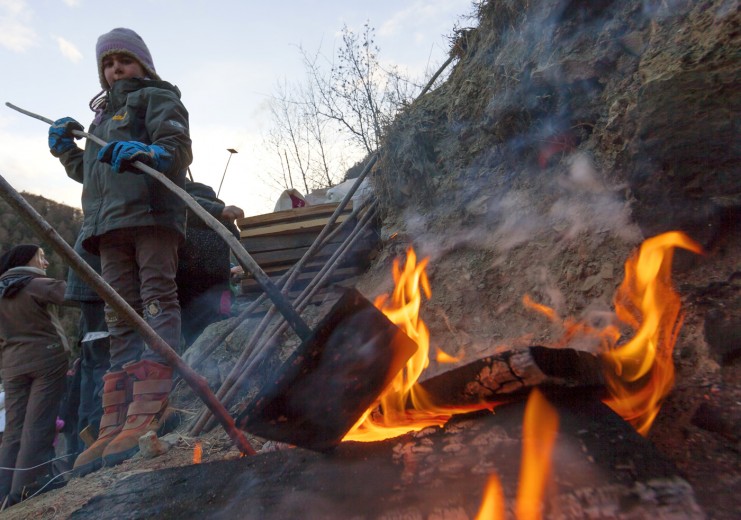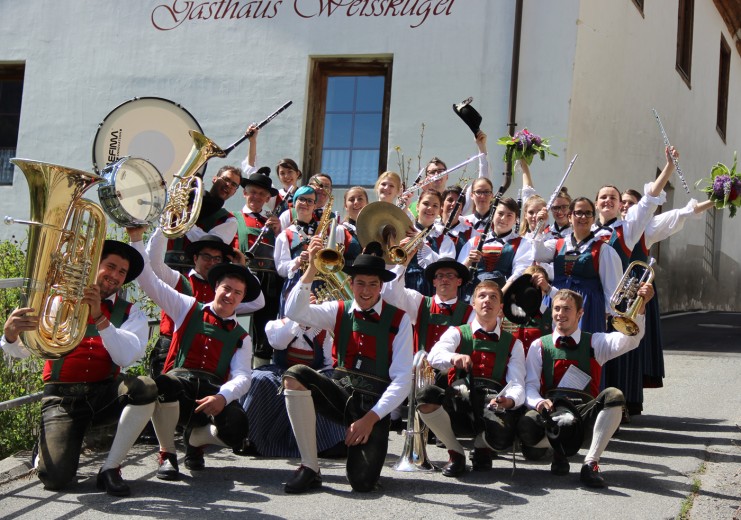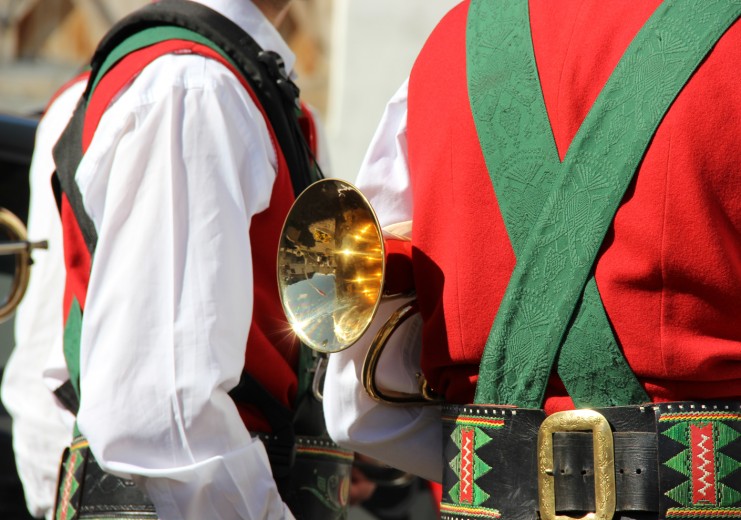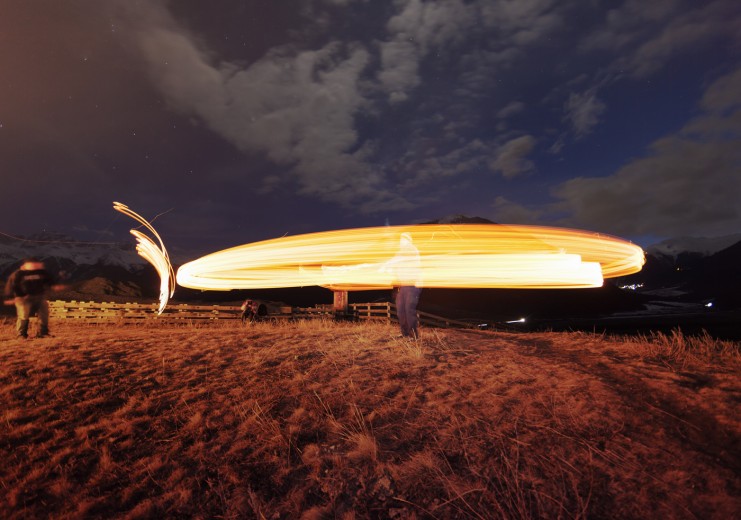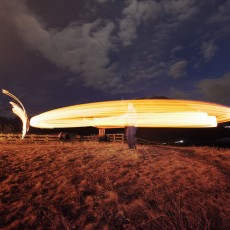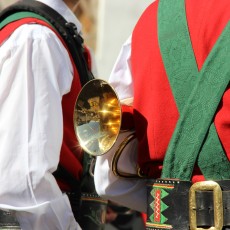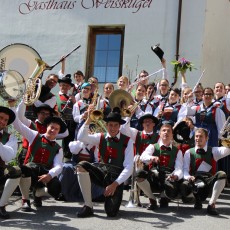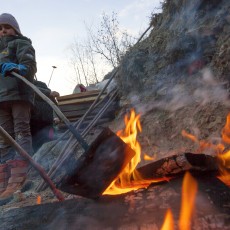Living traditions
Disc-flinging, Krampus and more
Every year on the first Sunday of Lent, the Upper Vinschgau is reserved for the archaic custom of “casting out the winter” – disc-flinging.
The “Sunday discs,” as they are known, are made of wood, some of them colourfully painted, and are square or round in shape. They are mounted on a hazel branch several metres long – the “Gart” – and then burnt to a glow in large wood fires. In shot-putting style, the disc flingers now spin the discs around and hurl them into the night sky, where they often fly for several hundred yards before thudding to the ground. As each disc is flung, a spell is sung to bring good fortune in the coming spring. The highlight of the evening is the burning of the “Larmstong” (stick) or the “Hex” cross, a slender spruce stick thickly clad in hay.
Other customs are also upheld in the valley, and are mainly of ecclesiastical or pagan origin: One such example is the Krampus Day “Schellen” bells on 5 December. During their procession, the bell ringers follow a path around the village with ringing bells and goat horn trumpets through the village, awakening the Krampus “devils” who, at some unknown and unexpected point in the proceedings, appear from out of nowhere, chase the Scheller down and smear them with black paint.
Sacred Heart Fires
On Sacred Heart of Jesus Sunday, mountain fires are lit on the mountains and hills in the late evening. This tradition goes back to the 18th century in memory of the vow given to the Heart of Jesus when Tyrol was under threat by the French. The custom actually dates back further, however, to earlier solstice or midsummer rites. Today these fires are usually burnt in the form of a heart or a cross.
Thriving village community
A variety of processions, mountain blessings and holy days encircle Matsch in an annual cycle, and the Matschers know how to celebrate them in style. The village community is united by countless clubs which organise regular events.
The Romansh place names
Given that in the Vinschgau, and the Matsch Valley along with it, the Romansh language of the former “indigenous people” was spoken until well into the 16th century, during the time of the Counter Reformation, a verbal cultural heritage has been preserved to this day in the rich wealth of place names, still commonly heard in agriculture, forestry and hunting.
This means that when you’re out on a hike or a mountain tour, you will pass by, amongst others, the “Tanaluv” (the Wolf’s Lair”) and the “Plan dal Uors” (Bears’ Plain).
The Matsch Saint
According to legend, Florinus was born in the 8th century in Matsch on the Valfurhof farm above the village. Florinus’ English-born parents are said to have stopped off here in Matsch in 790, on the way back from a pilgrimage to Rome. Florinus was a priest in Ramosh to whom a number of miracles are attributed. He died on November 17, 856. During the French wars, Florinus is said to have saved the Matsch people from the onslaught of the French by bringing them to a halt at the end of the valley with the words: “This far and no further”.
The anniversary of his death is celebrated in Matsch as a “Kirchta,” a holy feast. The Florinus Church was built in memory of this saint, patron saint of the parish of Matsch and second patron of the diocese of Chur.
In addition to the parish church at the entrance to the village, Matsch is also home to two other churches and four chapels, including the castle chapel of St. Martin at the Obermatsch castle ruins.


